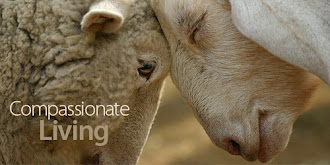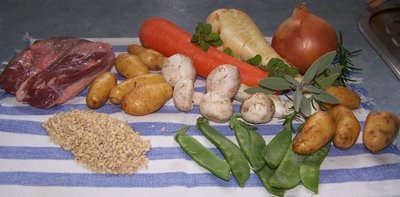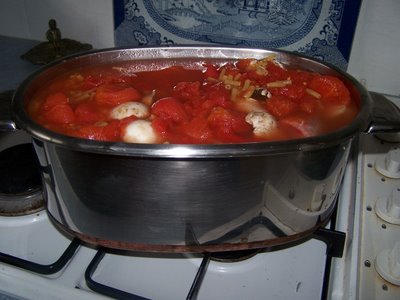

Somewhere in London there is a nostalgic, dare I say homesick, Aussie who has sent - anonymously - this email:
Any chance you could put Miss Schauer's recipe for Anzac biscuits up in time for the big day?? tried to find it online but no cigar!! you're blog was the first thing that came up!!
cheers, an aussie in london missing Nana's cooking...
For those who are unaware,
Anzac Day is an important day on the calendars of both Australia and New Zealand. One bit of culinary culture eaten all year round is the Anzac Biscuit. US residents please note: what you call cookies we call biscuits; what you call biscuits we call scones.
The army biscuit, also known as an ANZAC Wafer or an ANZAC Tile, is essentially a hardtack biscuit, a long shelf-life biscuit substitute for bread. Unlike bread though, the biscuits are very, very hard. Some soldiers preferred to grind them up and use them as porridge. (Add water and sugar, cook, serve with generous dollop of jam.) The biscuits are regarded as having high energy and are quite nutritious. To-day, bushwalkers like to have them in their backpacks to keep them going on a long hike. While the original may have been very, very hard, the one's Australians are used to to-day are just really crisp.
So of course Miss Eagle can't have an Aussie across the world with his or her tongue hanging out for an Anzac bikkie, particularly
Miss Schauer's Anzac Bikkie. Miss Eagle turns to page 571 of the cookery bible and here it is:
MISS SCHAUER'S ANZAC BISCUITS
Sift 1 cup of plain flour into a mixing bowl, add 1 1/2 cups of rolled oats, 1 small cup of cocoanut, 1 small cup of sugar, 2 teaspoons ground ginger, and 1/4lb of melted butter or Merra-lea, or rub in small 1/2 cup dripping. Put into a basin 1 level tablespoon of golden syrup, add 2 full tablespoons boiling water, or 1 beaten egg and 1 tablespoon boiling water, and 1 level teaspoon of crushed bic-carb. soda. Mix this over dry ingredients in mixing bowl, and directly it foams pour into mixture, blend thoroughly together. Take teaspoon quantities, flatten, place on well-greased tins, prick with a fork, leaving a space between each, as they spread. Bake in a very slow oven, as they burn easily.
Miss Eagle's postscript: The cocoanet is dessicated coconut which is finely shredded. While there are many brands of rolled oats, the best known and most traditional is Uncle Toby's. Golden Syrup is a golden syrup made from cane sugar. It is not the same as Maple Syrup. Please note what Miss Schauer says. The bikkies do spread and they do burn easily. Miss Schauer says 'prick with a fork' but what a lot of us do first is that we use a fork to flatten the bikkies and this leaves a nicely decorative corrugation on the bikkie.
ENJOY!
 The Old Foodie and Miss Eagle have passed some correspondence on the topic of Saucer Cheese Cake. Miss Eagle's original reference is here. Then Jane from yarnstorm helped out and the reference is here.
The Old Foodie says
The Old Foodie and Miss Eagle have passed some correspondence on the topic of Saucer Cheese Cake. Miss Eagle's original reference is here. Then Jane from yarnstorm helped out and the reference is here.
The Old Foodie says








